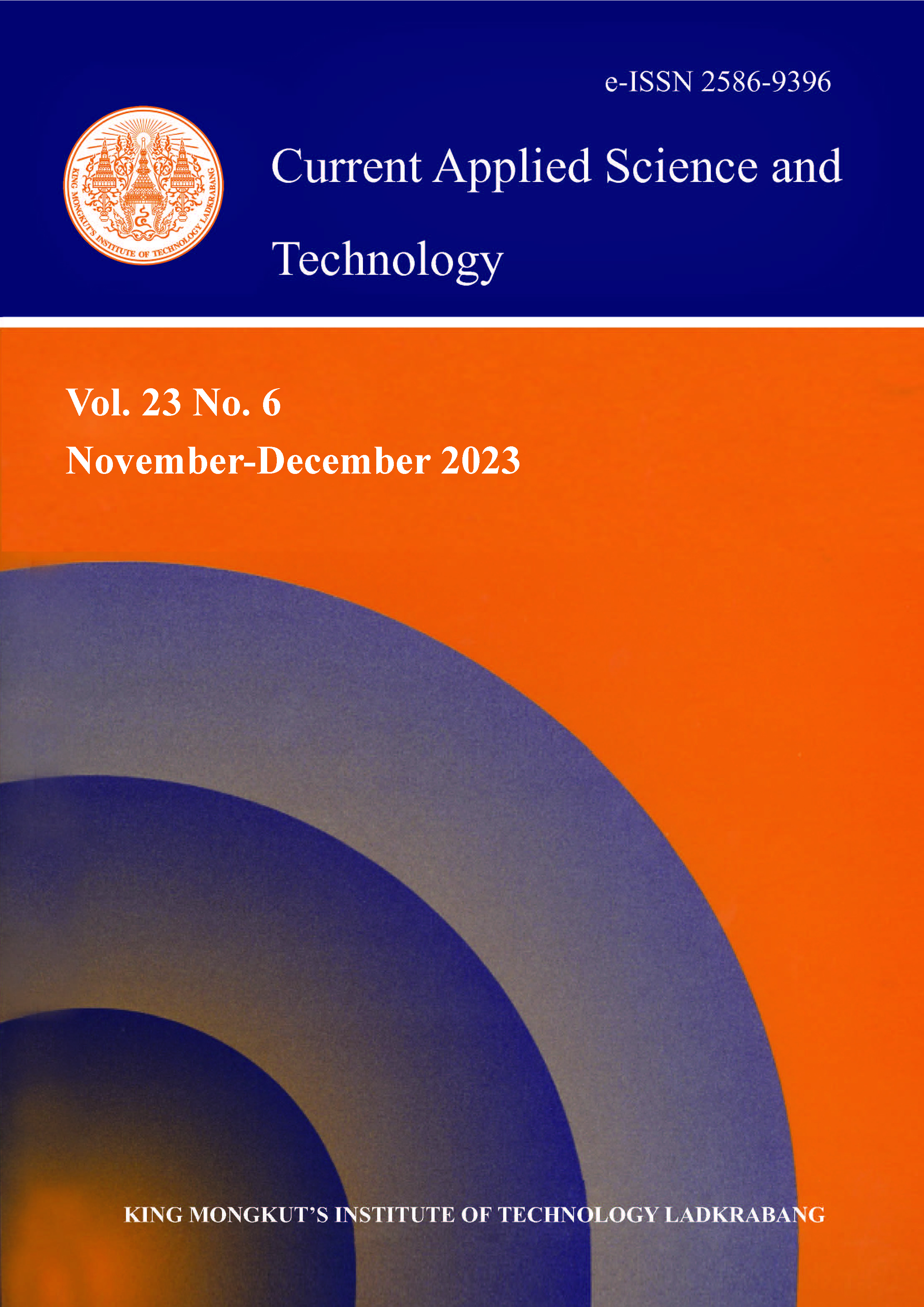Thermoelectric Prediction from Material Descriptors Using Machine Learning Technique
Main Article Content
Abstract
In this work, we employed a machine learning framework to predict the thermoelectric power factors of materials based on their composition and structure. To generate a broad range of materials for analysis, we sourced an existing dataset from the Materials Project database. The electronic transport properties, which serve as the output variables, were obtained from the same database via a Boltzmann transport theory calculation beyond ab-initio method. These properties were used to generate input data, or material descriptors, which rely solely on atomic information and crystal structure without recourse to density functional theory calculations. The descriptors were transformed into numerical features using the open-source software Matminer. Non-linear machine learning regression models were trained and tested on the transformed datasets, and their performance was evaluated. The optimized random forest model produced the most accurate predictions, with a yield of 88%. The ultimate goals of this research were to develop material selection strategies that bypass the need for self-consumption in density functional theory calculations, and to demonstrate the potential of machine learning models to describe the thermoelectric properties of existing materials datasets.
Keywords: thermoelectric; machine learning; neural network; random forest
*Corresponding author: Tel.: (+66) 869020207
E-mail: kittiphong.am@kmitl.ac.th
Article Details

This work is licensed under a Creative Commons Attribution-NonCommercial-NoDerivatives 4.0 International License.
Copyright Transfer Statement
The copyright of this article is transferred to Current Applied Science and Technology journal with effect if and when the article is accepted for publication. The copyright transfer covers the exclusive right to reproduce and distribute the article, including reprints, translations, photographic reproductions, electronic form (offline, online) or any other reproductions of similar nature.
The author warrants that this contribution is original and that he/she has full power to make this grant. The author signs for and accepts responsibility for releasing this material on behalf of any and all co-authors.
Here is the link for download: Copyright transfer form.pdf
References
Ismail, I.B. and Ahmed, H.W., 2009. Thermoelectric power generation using waste-heat energy as an alternative green technology. Recent Patents on Electrical Engineering, 2(1), DOI: 10.2174/1874476110902010027.
Ward, L., Agrawal, A., Choudhary, A. and Wolverton, C., 2016. A general-purpose machine learning framework for predicting properties of inorganic materials.npj Computational Materials, 2, DOI: 10.1038/npjcompumats.2016.28.
Curtarolo, S., Hart, G.L.W., Nardelli, M.B., Mingo, N., Sanvito, S. and Levy, O., 2013. The high-throughput highway to computational materials design. Nature Material, 12, 191-201, DOI: 10.1038/nmat3568.
Xi, L., Pan, S., Li, X., Xu, Y., Ni, J., Sun, X., Yang, J., Luo, J., Xi, J., Zhu, W., Li, X., Jiang, D., Dronskowski, R., Shi, X., Snyder, G.F. and Zhang, W., 2013. Discovery of high-performance thermoelectric chalcogenides through reliable high-throughput material screening. Journal of the American Chemical Society, 140, 10785-10793, DOI: 10.1021/jacs.8b04704.
Ye, W., Chen, C., Dwaraknath, S., Jain, A., Ong, S. and Persson, K., 2018. Harnessing the materials project for machine-learning and accelerated discovery. MRS Bulletin, 43(9), 664-669, DOI: 10.1557/mrs.2018.202.
Ramprasad, R., Batra, R., Pilania, G., Mannodi-Kanakkithodi, A. and Kim, C., 2017. Machine learning in materials informatics: recent applications and prospects. npj Computational Materials, 3, DOI: 10.1038/s41524-017-0056-5.
Meredig, B., Agrawal, A., Kirklin, S., Saal, J.E., Doak, J.W., Thompson, A., Zhang, K., Choudhary, A. and Wolverton, C., 2014. Combinatorial screening for new materials in unconstrained composition space with machine learning. Physical Review B, 89, DOI: 10.1103/PhysRevB.89.094104.
Lu, S., Zhou, Q., Ouyang, Y., Guo, Y., Li, Q. and Wang, J., 2018. Accelerated discovery of stable lead-free hybrid organic-inorganic perovskites via machine learning. Nature Communication, 9, 1-8, DOI: 10.1038/s41467-018-05761-w.
Jain, A., Ong, S.P., Hautier, G., Chen, W., Richards, W.D., Dacek, S., Cholia, S., Gunter, D., Skinner, D., Ceder, G. and Persson, K.A., 2013. Commentary: The materials project: A materials genome approach to accelerating materials innovation. APL Materials, 1(1), DOI: 10.1063/1.4812323.
Madsen, G.K.H., Carrete, J. and Verstraete, M.J., 2018. BoltzTraP2, a program for interpolating band structures and calculating semi-classical transport coefficients. Computer Physics Communications, 231, 140-145, DOI: 10.1016/j.cpc.2018.05.010.
Pedregosa, F., Varoquaux, G., Gramfort, A., Michel, V., Thirion, B., Grisel, O., Blondel, M., Müller, A., Nothman, J., Louppe, G., Prettenhofer, P., Weiss, R., Dubourg, V., Vanderplas, J., Passos, A., Cournapeau, D., Brucher, M., Perrot, M. and Duchesnay, E., 2011. Scikit-learn: machine learning in Python. Journal of Machine Learning Research, 12, 2825-2830, DOI: 10.48550/arXiv.1201.0490.
Gaultois, M.W., Sparks, T.D., Borg, C.K.H., Seshadri, R., Bonificio, W.D. and Clarke, D.R., 2013. Data-driven review of thermoelectric materials: Performance and resource considerations. Chemistry of Materials, 25, 2911-2920, DOI: 10.1021/cm400893e.






